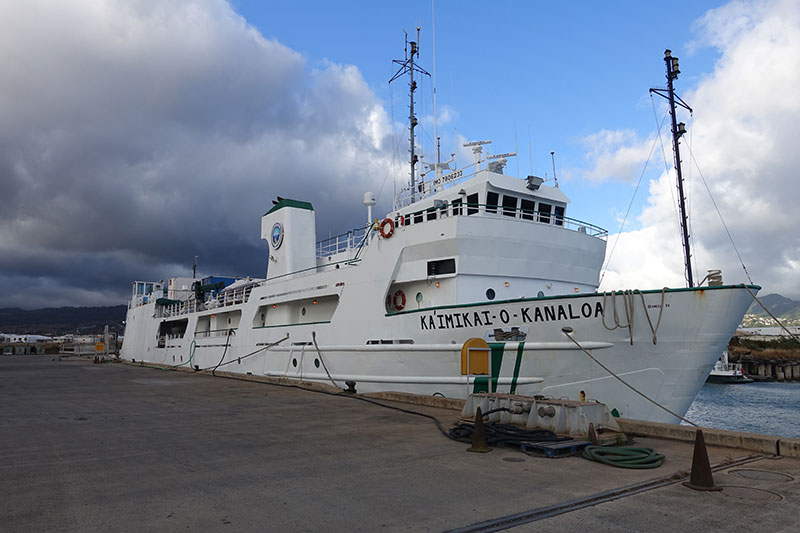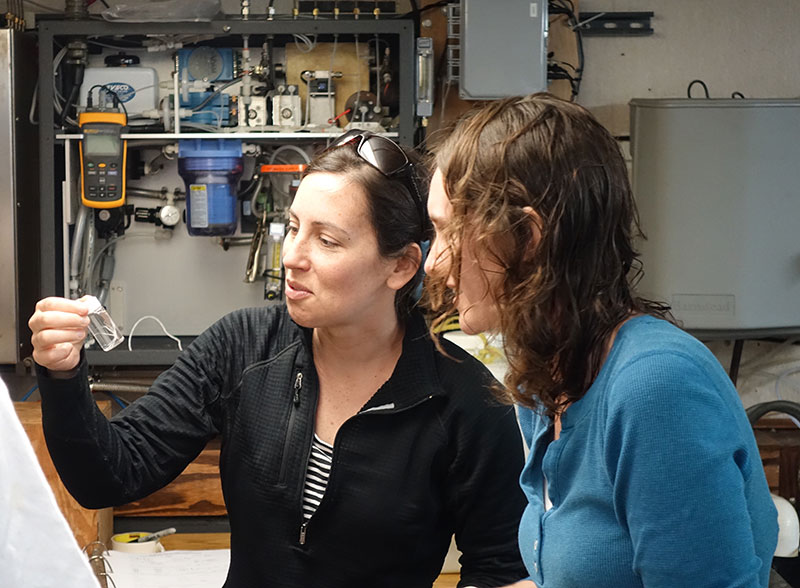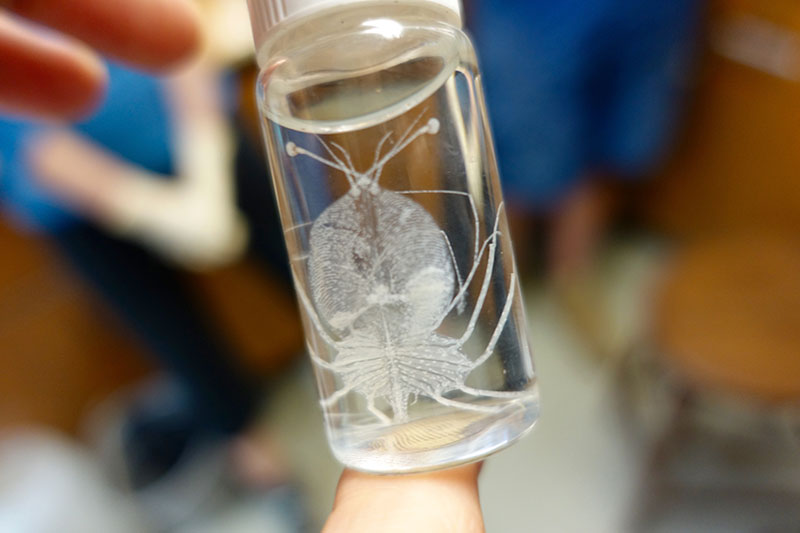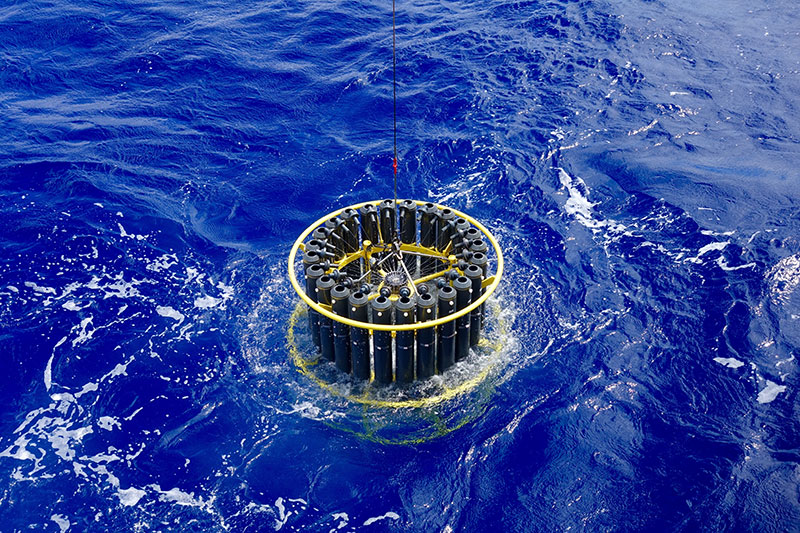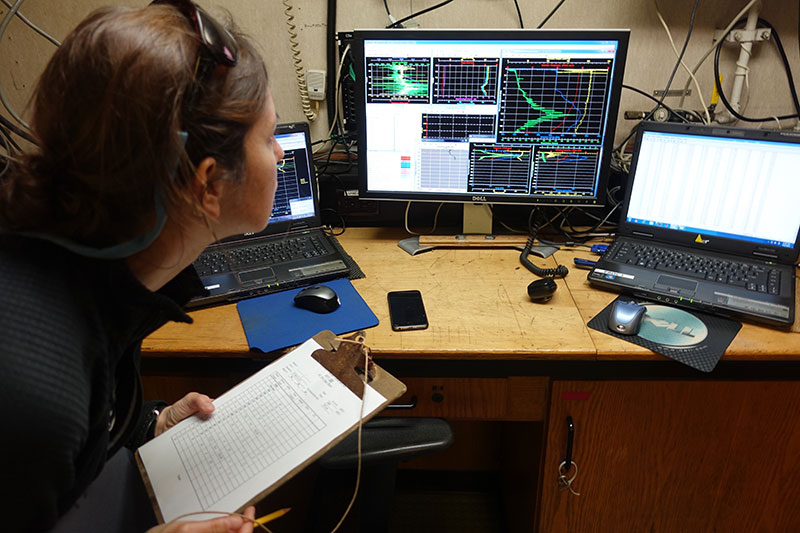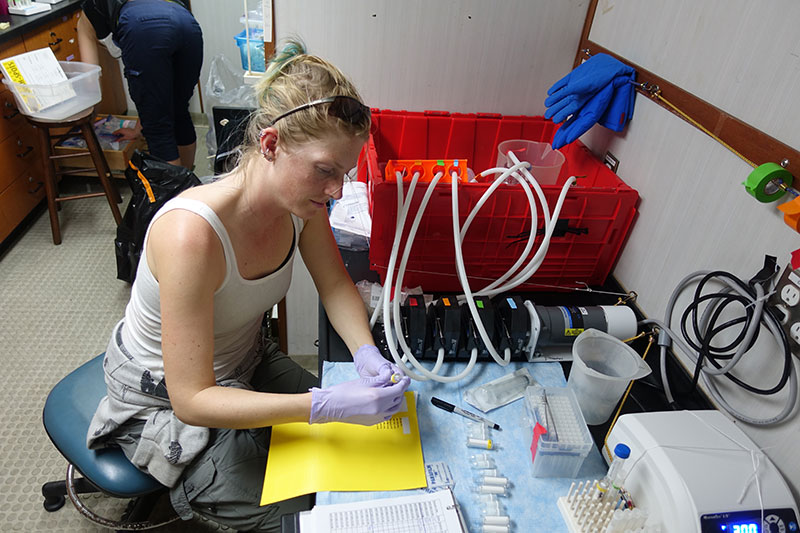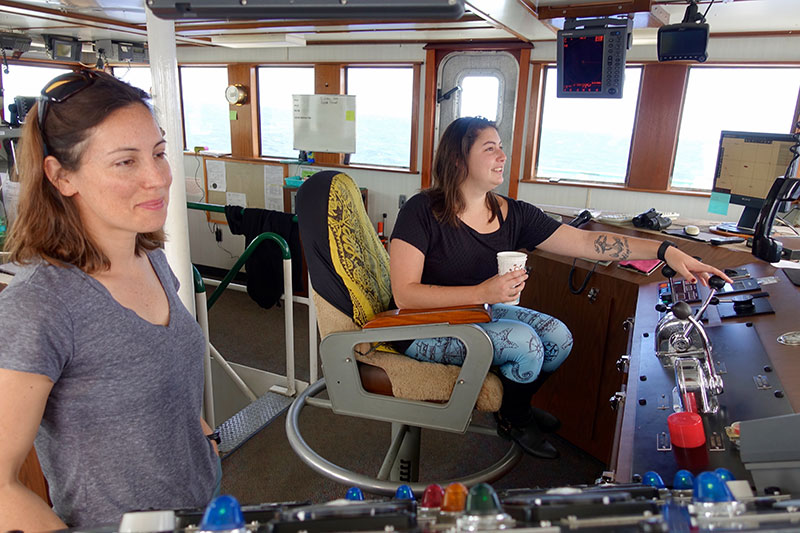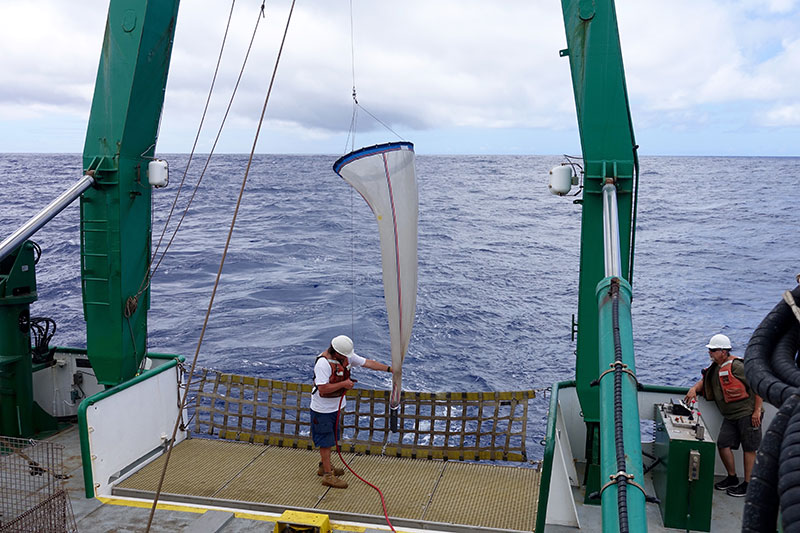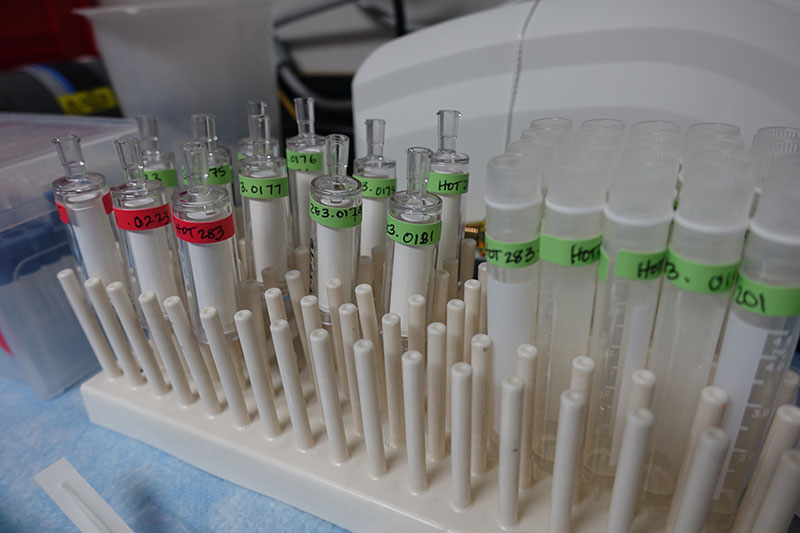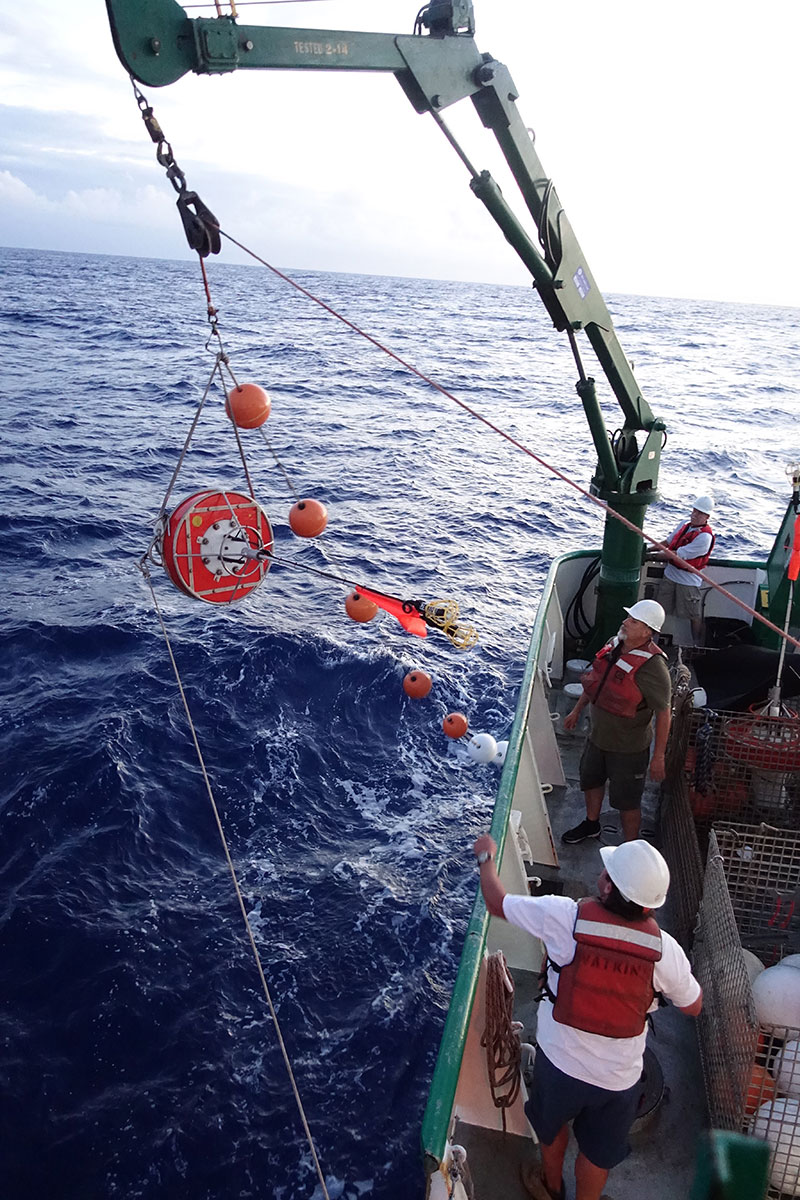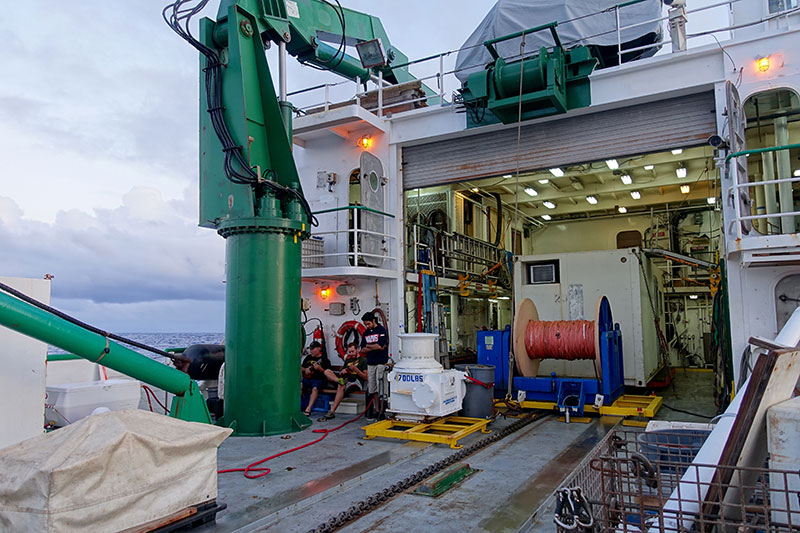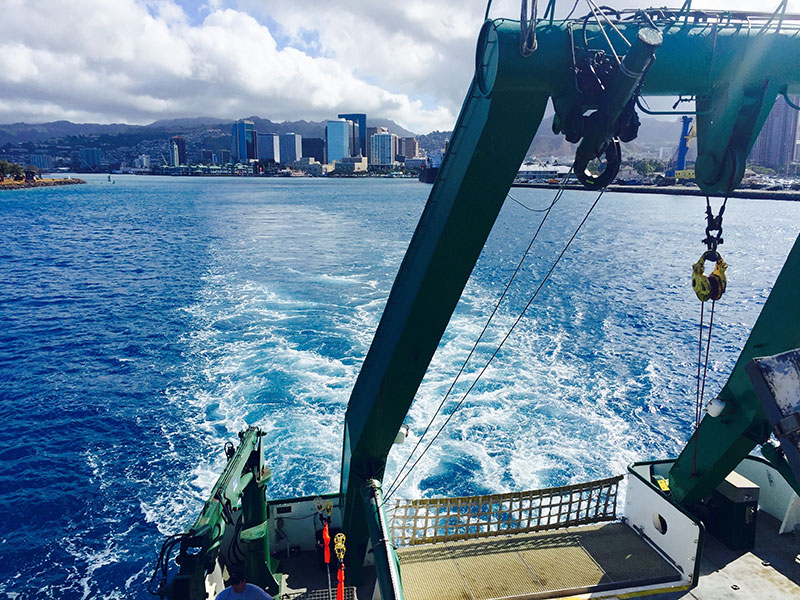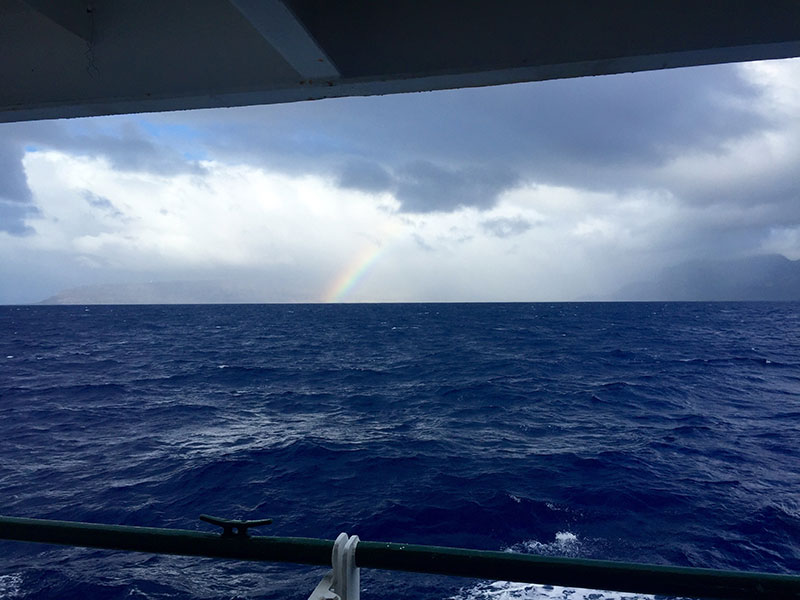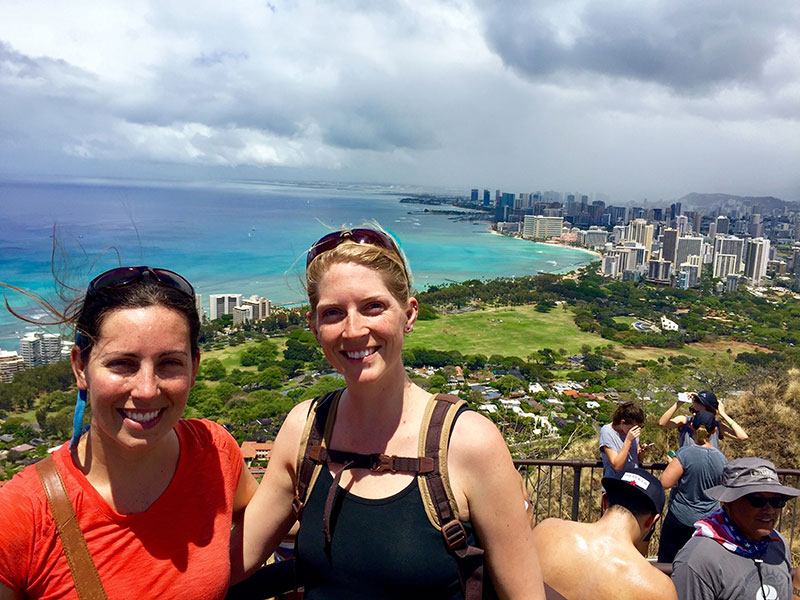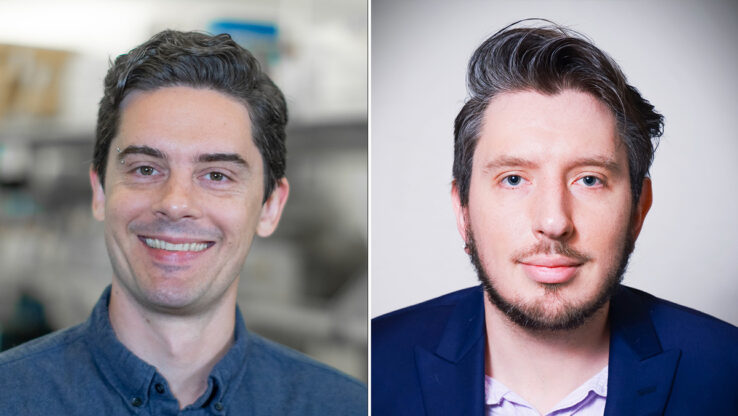Exploring the Invisible Forest
 isbscience.org/news/2016/06/06/exploring-the-invisible-forest/
isbscience.org/news/2016/06/06/exploring-the-invisible-forest/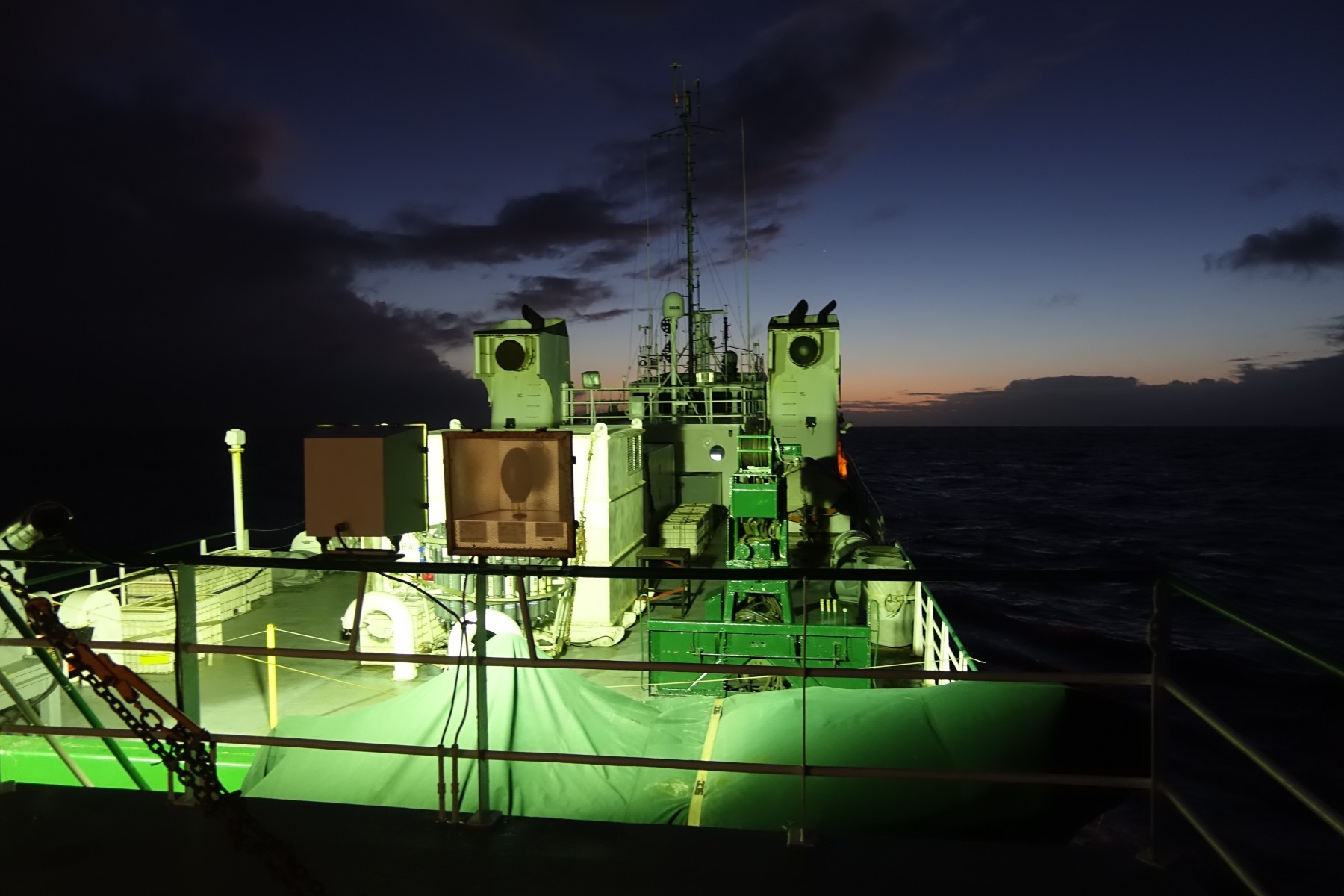
Gallery above: Dr. Anne Thompson and research assistant Allison Lee traveled to Station ALOHA in Hawaii on a research cruise to collect water samples and various species of organisms. This material is based upon work supported by the National Science Foundation under Grant No. OCE-1558924.
What’s the “invisible forest” and what does it have to do with environmental research? Dr. Anne Thompson who was in the Baliga Lab at ISB and recently stepped into a role as a research assistant professor at Portland State University explains in the Q&A:
1. What is the “invisible forest”?
AT: The invisible forest is a collection of tiny floating cells responsible for producing half of the oxygen that is in our atmosphere by the process of photosynthesis. That means you can thank the invisible forest for every second breath you take! These cells also utilize carbon dioxide from the atmosphere, converting it to biomass, some of which is recycled constantly in the ocean and some of which is exported to the very deep ocean. So the activity of the invisible forest also affects the balance of carbon dioxide in our atmosphere, which is related to the Earth’s climate today and in ancient history. The term “the invisible forest” was first used by oceanographers who pioneered the discovery of these very abundant populations of cells in the ocean. Though these cells are still invisible to the naked eye, scientists have developed technology and a greater understanding of the natural world, which allows us to study these important cells in a deliberate way.
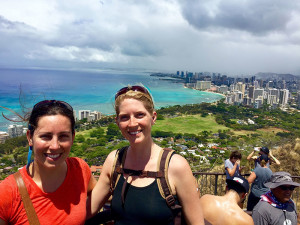
Dr. Anne Thompson, left, and research assistant, Allison Lee, in Hawaii, preparing for their research cruise to Station ALOHA.
2. You recently went to Station ALOHA for a research trip. What was the main purpose of that trip?
AT: Just like a forest on land, the invisible forest is made of many different species of organisms that carry out different roles in their ecosystem. They are diverse in their genetic material, shapes, and sizes. What we don’t understand very well is how this diversity is important to the role, or the job, of these cells in the ocean. Should we just count the phytoplankton in the ocean to understand how they contribute to global processes, or do we need to know which exact types of phytoplankton are present? One analogy would be to imagine your change jar at home. To know how much money you have, can you just count the number of coins? Or, do you need to know how many quarters, how many pennies, etc?
This question of the importance of diversity is particularly uncertain in a group of very abundant phytoplankton, called Prochlorococcus. I like to call them “Pro” for short. These very tiny cells are the most abundant photosynthetic cell on the planet and live in the vast open oceans that cover most (70%) of the planet. Station ALOHA, about 100 miles north of Hawaii, is right in the middle of this vast open ocean habitat, so a great place to study Pro in their natural environment. Not only is Pro super abundant at Station ALOHA, but researchers at the University of Hawaii have been studying all the biological, physical, and chemical goings on at Station ALOHA for over 25 years. This puts our work with Pro into an excellent historical and ecosystem context.
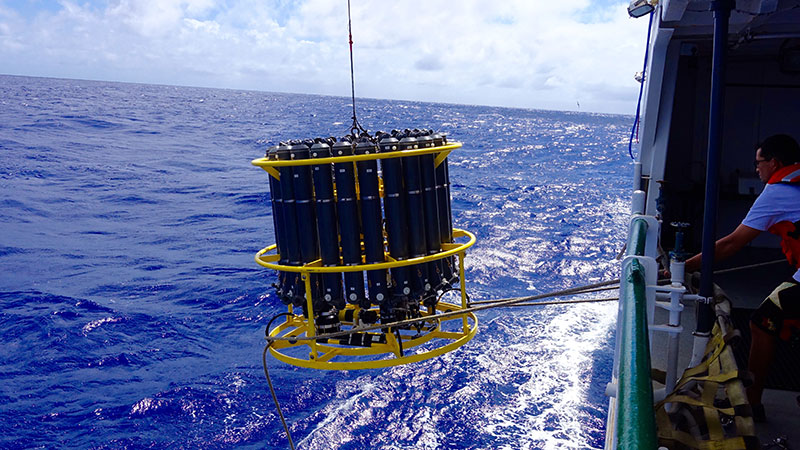
This contraption of bottles is referred to as a CTD (Conductivity, Temperature, Density). It’s a rosette of bottles that capture sea water at various depths in the ocean according to water column features measured by the CTD sensors.
3. The number of aquatic organisms that help us sustain life on earth seems to be staggering. What about these organisms drives your research and inspires your curiosity?
AT: Many aspects of these organisms inspire me. At a very basic level, I’m amazed by the intricate beauty of phytoplankton and all the different forms, shapes, and sizes they exhibit. There is also something very fascinating in how a single cell, a relatively simple life form compared to us multi-cellular creatures, can be so very important to our lives and the Earth as we know it. These two characteristics of phytoplankton, as well as the thrill of being on the open ocean to study them, drive my research in oceanography and my curiosity.
4. How do you hope your research will advance the field?
AT: Since the abundance and importance of phytoplankton has been discovered, much has been learned of their great diversity and their patterns of distribution across the world’s oceans. My research aims to understand the consequences of this diversity to Earth’s global cycles. I hope my research will inform global-scale models that forecast how changes to the Earth system will affect phytoplankton activity and how changes in phytoplankton activity may affect the Earth system.
5. What’s your advice for future oceanographers?
AT: Invent new ways to study the ocean. Technology is changing how we sample and observe the ocean. For example, using satellites, we can map blooms of phytoplankton on global scales over time. Using sequencing, we can identify the cells present in a drop of water. Through autonomous vehicles, we can measure the abundance of target organisms hour-by-hour. However, even with these advances, we still only see a slice of what’s present in the ocean. It may be a slice of time or a slice of space, either way the ocean is so very deep, wide, and dynamic that it is greatly under-sampled. Future oceanographers will need to devise new ways to observe the ocean in higher resolution in space and time to uncover the unknowns that are surely present.
I also encourage future oceanographers to spread the word about the beauty, wonder, and importance of the ocean to human life on Earth. We are a lucky group of people who get to spend our working time breathing fresh air of the ocean, watching rays of light shoot down into a gem-like blue, and experiencing its wild beauty in a storm. In the U.S., many students who live in coastal states have never been to the ocean. Across the world, this problem is even more profound. I hope future oceanographers will be creative about how to engage communities at home and away in the wonder and importance of our oceans.



